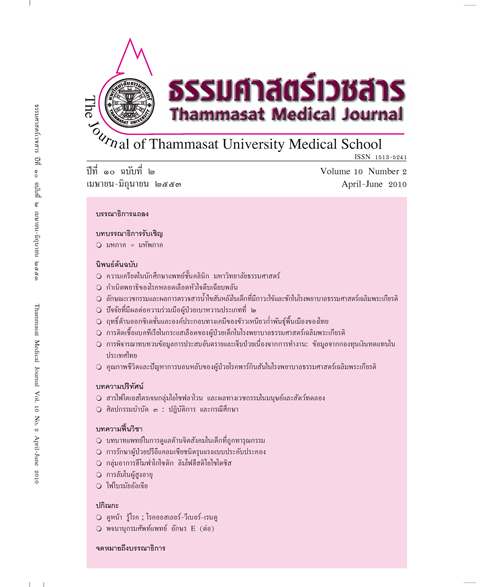Art Therapy in Practice
Keywords:
Art Therapy, PracticeAbstract
Art Therapy has long been practiced in many countries, especially in the West, as an alternative means for treatingmentally traumatized persons. However, it is not yet implemented rutinely in Thailand. Literally, it denotes the practiceof utilizing art materials in the treatment of patients; the current term refers to the specific use of art creation inpsychotherapy (çart psychotherapyé). The main objectives of treatment are the strengthening of indivdual creativity andthe expression and elaboration of the patientsû thoughts and emotions. The visual art of drawing and painting are themost commonly practiced: sculpturing is a practical therapeutic form for dealing with blind patients. Patientsû creationof visual art, leading to non-verbal self disclosure,helps them get in touch with thoughts and feelings that are hiddenfrom the conscious mind, the discipline of so-called expressive art therapy.
This chapter furnishes a brief overview of art therapy practice in achieving therapeutic results. In practice, there arethree main types of art therapy interventions: open studio, group art therapy, and individual art therapy.
In order to facillitate the expression of the internal world, art therapy practice involves offering thepatient a white page and the freedom to choose any art material, and to work within a silent and peaceful environment.Regarding the art therapeutic process, the three elements, namely, image-making, the elaboration of images, and therelationship with the art therapist, are inferconnected. They should never be used in isolation, and none of them shouldbe forgotten in clinical practice. At this point, it must be stressed that the results of treatment rely upon the process ofcreation and not the finished art product.



